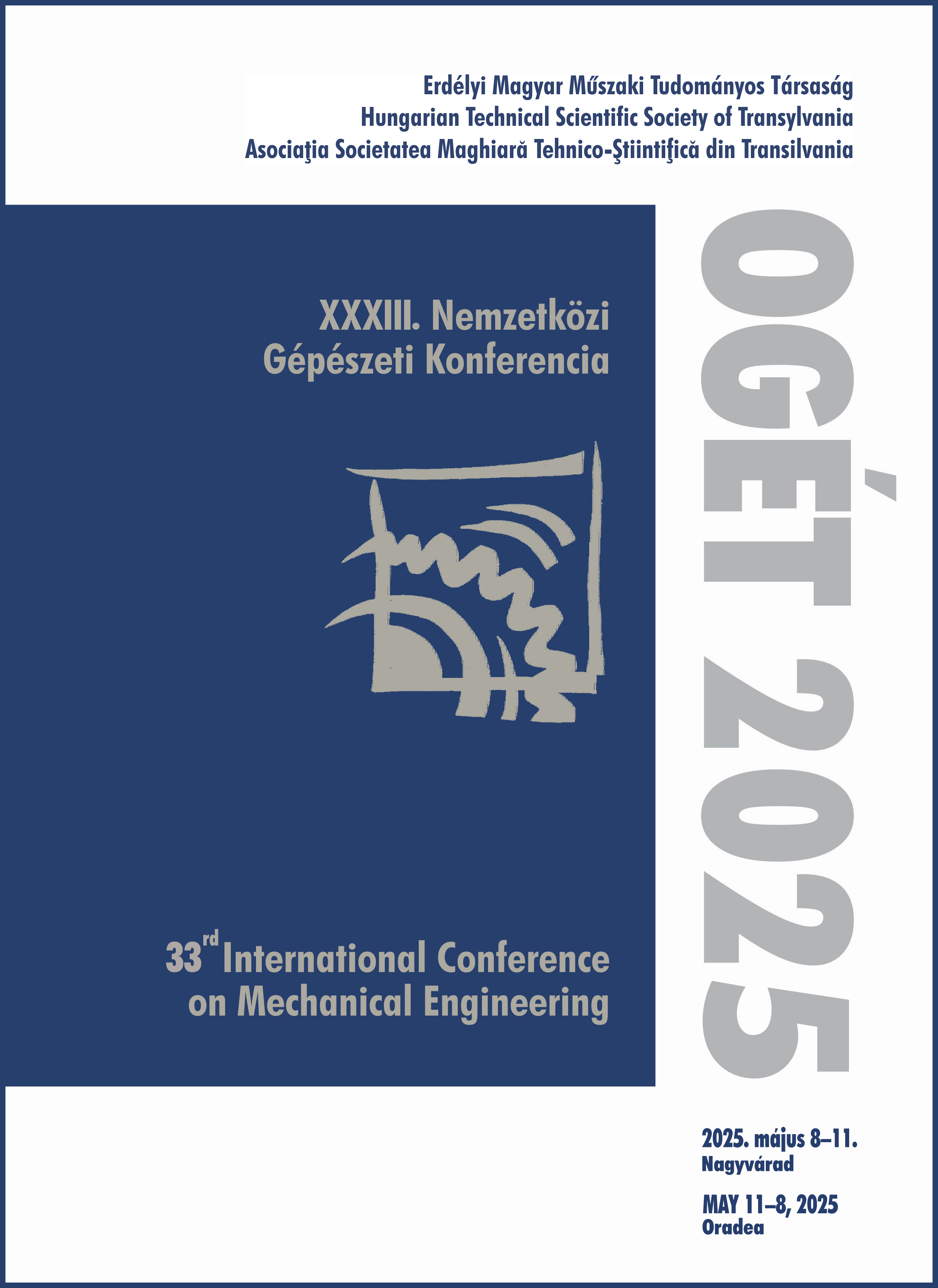Hiperelasztikus anyagok modellezése adatalapú módszer és neurális hálózat alkalmazásával Python környezetben
Modelling the deformation of hyperelastic solids based on data-driven approach using Neural Network Models in Python
Keywords:
hyperelastic materials, feedforward neural network, automated finite element simulation, machine learning, data-driven approach, /, hiperelasztikus anyagok, feedforward neurális hálózat, automatizált végeselemes szimuláció, gépi tanulás, adatvezérelt megközelítésAbstract
Our research aim to develop a data-driven approach to model the force-displacement behavior of a two- dimensional hyperelastic body with an irregular geometry. The geometry consists of a rectangular deformable body with a circular cutout, where one side is fixed, and a displacement constraint is applied to the other side. A feedforward neural network, trained in Python, approximates the nonlinear behavior using virtual datasets from automated finite element simulations in Abaqus. By varying the cutout’s position and radius, we analyze the mechanical response. The results confirm that this approach accurately predicts force-displacement characteristics while optimizing computational costs.
Kivonat
Kutatásunk célja egy adatalapú módszer kidolgozása egy kétdimenziós, nem szabályos geometriájú, hiperelaszti- kus test erő-elmozdulás viselkedésének modellezésére. A vizsgált téglalap alakú testben egy körkivágás található, egyik oldala rögzített, míg a másik oldalon előírt elmozdulási kényszert alkalmazunk. A nemlinearitást egy feedforward neurális hálózat közelíti, amelyet Python környezetben, Abaqus végeselemes szimulációkkal generált adathalmazokon tanítunk. A körkivágás pozíciójának és sugarának változtatásával elemezzük a mechanikai választ. Az eredmények igazolják, hogy a módszer pontosan előrejelzi az erő-elmozdulás karakterisztikát, miközben optimalizálja a számítási költségeket.
References
Steven L Brunton and J Nathan Kutz. Data-driven science and engineering: Machine learning, dynamical systems, and control., Cambridge University Press, 2022.
T. Kirchdoerfer and M. Ortiz. Data-driven computational mechanics., Computer Methods in Applied Mechanics and Engineering, 304:81–101, 2016.
Johannes Dornheim, Lukas Morand, Hemanth Janarthanam Nallani, and Dirk Helm. Neural networks for constitutive modeling: From universal function approximators to advanced models and the integration of physics. Archives of Computational Methods in Engineering, 31(2):1097–1127, 2024
Jamshid Ghaboussi, JH Garrett Jr, and Xiping Wu. Knowledge-based modeling of material behavior with neural networks., Journal of engineering mechanics, 117(1):132–153, 1991.
F Pedregosa, G Varoquaux, A Gramfort, V Michel, B Thirion, O Grisel, M Blondel, P Prettenhofer, R Weiss, V Dubourg, et al. Machine learning in python., Journal of machine learning research, 12 (Oct):2825–2830, 2011.


